Keto Chicken Pad Thai has all the flavors of the traditional rice noodle dish but with just a fraction of the carbs! An authentic and flavorful keto pad Thai with chicken! Sweet, sour, salty, and spicy, this pad thai will hit all of your taste buds. A super easy meal for 4 and ready in just 30 minutes!
Why order takeout when you can have an authentic and delicious pad thai ready in just 30 minutes? This Keto Pad Thai recipe is a must-try for anyone following a low carb diet. Enjoy the delicious flavors of this timeless dish without compromising on your health goals.
The first time I tried pad Thai in a restaurant I loved it. Pad Thai is one of the most well-known dishes in Thai cuisine. It's a stir-fry noodle dish that typically includes shrimp or chicken, bean sprouts, egg, peanuts, and a tangy sauce made with tamarind paste and fish sauce. It has been a favorite ever since. Which is why I needed a low carb keto diet version here at Joy Filled Eats. I knew I couldn't be the only one who loves this classic dish.
Ingredients
Fish sauce - Fish sauce gives a nice salty kick to the dish.
Rice wine vinegar - Rice vinegar is a crucial ingredient in many Asian cuisines, and pad thai sauce is no exception. This flavorful vinegar adds a tangy, slightly sweet taste to the dish that perfectly balances out other ingredients. If you're looking for an authentic pad thai flavor, rice vinegar is a must-have.
Sambal oelek (chili paste) - Sambal oelek is a popular chili paste that has been used in Southeast Asian cuisine for centuries. This fiery condiment is made from ground red chilies, vinegar, salt, and sometimes sugar or garlic. It's bold flavor and spicy kick make it an essential ingredient in many traditional dishes such as Pad Thai.
Peanut butter - Traditionally pad Thai is made with tamarind paste. However, those who are not fans of tamarind or do not have access to it may use peanut butter. Peanut butter adds a creamy texture and nutty flavor to Thai food that complements the other ingredients perfectly. Peanut butter also provides a healthy dose of protein, making this dish more filling and satisfying. In addition, using peanut butter instead of tamarind eliminates the need for sugar which can make this already healthy meal even better for you.
Coconut aminos - Coconut aminos are a popular alternative to soy sauce that has gained popularity over the years. This delicious condiment is made from the sap of coconut blossoms and is used as a seasoning in many dishes, particularly in Asian cuisine. Coconut aminos have become increasingly popular among people who are looking for low carb recipes, and for gluten free, vegan, and paleo-friendly alternatives to traditional soy sauce.
Fresh lime juice - Fresh lime adds the best flavor but you can substitute in bottled in a pinch.
Liquid stevia - You can also add a sugar free sweetener of your choice to taste, such as a brown sugar substitute sweetener. Whatever sweetener you prefer in your keto recipes will work here.
Shirataki noodles - I talk about this extensively a bit further down in the post. Alternatively, you can use spaghetti squash, hearts of palm noodles, or zucchini noodles.
Chicken breast - I normally use chicken breast since it has a mild flavor but chicken thighs will also work.
Eggs - Adding egg boosts the protein, adds flavor, and helps the sauce stick to the noodles.
Ginger - Fresh ginger will add the best flavor.
Garlic - I recommend using fresh garlic as well.
Scallions - Green onions add nice color and flavor.
Mung bean sprouts - Mung bean sprouts are traditionally used in this dish.
Peanuts - Roasted salted peanuts give the best flavor and crunch.
Cilantro leaves - Cilantro gives a vibrant fresh flavor to the dish.
How To Make Keto Pad Thai
Step 1: Prep Fresh Produce
Start by washing and drying the fresh produce. Thinly slice the scallions, keeping the white and green parts separate. Remove cilantro leaves from the stems and give them a rough chop until you have about ⅓ cup. Peel and mince garlic and ginger.
Step 2: Cut Chicken
Butterfly the chicken breasts in half to make them thinner and then cut the chicken into bite-sized pieces. Depending on the thickness of your chicken breasts and your personal preferences, you can skip the butterflying, but I find it gives the chicken a more traditional pad thai feel and helps it to cook faster.
Step 3: Mix Keto Pad Thai Sauce
Add the fish sauce, rice vinegar, peanut butter, coconut aminos, lime juice, and stevia to a small bowl. Add up to 1 tablespoon of Sambal Oelek (or other chili paste) depending on how spicy you like your pad thai. Whisk the sauce together until smooth and well combined.
*Note: You can substitute soy sauce for the coconut aminos. They have a similar flavor, but I prefer the added sweetness that the coconut aminos provides.
Step 4: Stir Fry Keto Pad Thai Base
Heat a wok or large pan over medium heat or medium-high heat. Add a drizzle of oil (I used sesame oil), then stir fry the minced garlic and ginger for 30 seconds, or until fragrant. Stir continuously so that the garlic doesn't burn.
After 30 seconds, add 1 tablespoon of Sambal Oelek and the sliced scallion whites. Continue stir frying in the skillet over medium heat for 2-3 minutes until the scallions have softened.
This base is packed with flavor and allows us to get away with a lighter (and lower carb) sauce while still keeping the dish flavorful!
Step 5: Stir Fry Chicken
Once the base has cooked, add the chicken to the wok or pan and stir fry with the keto pad thai base for about 5 minutes, or until the chicken has seared on the outsides and cooked through.
Step 6: Beat Eggs & Prep Noodles
While the chicken cooks, beat two eggs using a whisk or fork until well combined. Drain and thoroughly rinse the Shirataki noodles with hot water for about 2 minutes or until their package odor is gone and they have a bland/tasteless flavor.
Step 7: Cook Shirataki Noodles
Once the chicken is done cooking completely empty the chicken/base mixture from the wok and set aside. Add the noodles to the empty wok (without using any oil) and dry fry them over medium-high heat for 5-7 minutes to remove all excess water.
You want the noodles to have a firm and noodle-like texture. Be careful not to overcook the noodles or you will lose this texture.
Step 8: Stir Fry Eggs
Once the noodles have cooked, stir in the beaten eggs and scramble/stir fry them with the noodles until they are cooked, about 2-3 minutes.
Step 9: Mix Keto Pad Thai
Once the eggs have cooked, add the chicken/base mixture back to the wok with the eggs and noodles. Add the bean sprouts and stir in the pad thai sauce. Continue stir-frying and mixing for 2-3 minutes until everything is well combined and heated through.
Top the keto pad thai with the scallion greens, cilantro, and chopped peanuts. There you go, a super easy and delicious keto chicken pad thai all in under 30 minutes. It makes 4-6 large servings so you have enough for the whole family + some extra leftovers!
Variations
Spicy - Red pepper flakes or chili paste can easily add as much heat as you want. Sambal oelek can be added to this dish to give it an extra layer of heat and complexity. The chili paste's slight acidity also helps balance out the sweetness of the tamarind sauce.
Vegetables - Add your choice.
Common Questions
Is Pad Thai keto?
Regular pad Thai is not keto. It is primarily made with rice noodles which are made from rice and have a lot of carbs.
What Noodles Do You Use For A Keto Pad Thai?
I use Shirataki noodles (aka miracle noodles) for my keto pad thai. These noodles are popular in Asian dishes and are made from ground konjac yams.
If you haven't heard of Shirataki noodles yet, then let me introduce you to your new best friend!
Shirataki noodles are 97% water and 3% fiber and that means they are 0 net carbs per serving and near 0 calories per serving. They are the perfect weight loss noodle.
Where Can You Buy Keto Pad Thai Noodles?
Shirataki noodles might seem like an obscure ingredient, but they're actually pretty easy to find! Any world market or Asian market will have them.
They are also becoming increasingly available in health food grocery stores like Whole Foods or Trader Joe's. I even saw Shirataki noodles at my local Walmart! Learn more about shirataki noodles here.
What Do Shirataki Noodles Taste Like?
Shirataki noodles are virtually tasteless which makes them perfect for the flavorful sauce in this keto pad thai. The noodles come in a package with water and when first opened you might notice an unpleasant odor, but fear not!
Simply drain then thoroughly rinse the noodles to remove the odor. Cook the noodles in a wok or pan with no oil to completely remove the excess water and to give them a more familiar noodle-like texture.
Like what you see? Follow me on Facebook! Love this recipe? Leave a comment & 5-star rating right here! Make sure you don’t miss new recipes by getting email updates!
Want to Save This Recipe?
Enter your email below & we'll send it to your inbox. Plus get great new recipes from us every week!
By submitting this form, you consent to receive emails from Joy Filled Eats
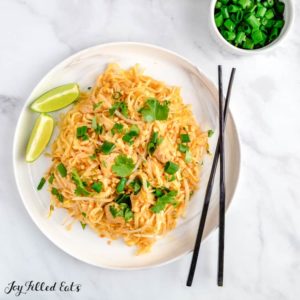
Keto Chicken Pad Thai
Ingredients
Sauce
- 3 tablespoon fish sauce
- 1 tablespoon rice vinegar
- 1 tablespoon sambal oelek (chili paste, use 1 teaspoon if you prefer less heat)
- 1 tablespoon peanut butter
- 1 tablespoon coconut aminos
- 2 tablespoon lime juice
- 5 drops stevia
Keto Pad Thai
- 1 16 oz package shirataki noodles
- 1 lb chicken breast, butterflied and cut into bit sized pieces
- 2 eggs, beaten
- ½ tablespoon ginger, minced
- 2 cloves garlic, minced
- 3 large scallions, thinly sliced, keep whites and greens separate
- 1 tablespoon sambal oelek
- 1 ½ cups bean sprouts
Toppings
- ¼ cup peanuts, chopped
- ⅓ cup cilantro leaves, chopped
Instructions
- Wash and dry fresh produce. Thinly slice scallions, keeping whites and greens separated. Peel and mince ginger and garlic. Roughly chop cilantro leaves.
- Butterfly the chicken breast then cut into small bite sized pieces.
- In a small bowl, whisk together all sauce ingredients until well combined and smooth.
- Heat a drizzle of oil (I used sesame oil) in a wok or large pan over medium high heat. Add ginger and garlic and stir fry until fragrant (about 30 seconds), stirring frequently. Add scallion whites and 1 tablespoon sambal oelek to wok with ginger and garlic and continue stir frying until scallions have softened about 2-3 minutes.
- Once scallion whites have softened, add chicken to wok with the ginger, garlic, scallions, and sambal oelek. Stir fry chicken for 5 minutes or until lightly browned and cooked through.
- While chicken cooks, beat 2 eggs until well combined. Drain and rinse shirataki noodles thoroughly under hot water for about 2 minutes.
- Once chicken has finished, remove the chicken stir fry the wok or pan and set aside. Add shiratki noodles to the wok and stir fry noodles until firm, about 5-7 minutes.
- Once noodles have cooked, add the beaten eggs to the wok with the noodles and stir fry for 2-3 minutes until the eggs have cooked. Stir frequently to break up/scramble the eggs.
- Once eggs have cooked, add the chicken stir fry, pad thai sauce, and bean sprouts to the wok. Continue stir frying for about 2 minutes until all ingredients are well combined.
- Top with scallion greens, crushed peanuts, and cilantro to serve. Enjoy!
Nutrition
This is a guest post from Kailey from Living Fresh Daily. I'm super excited to be sharing my keto pad thai recipe for my first guest post. It's quick, easy, and full of flavor and is one of my go-to recipes for those busy nights. Make sure to try these Rainbow Spring Rolls too!
Looking for more unique Keto Dinner Ideas? Try these:
Chicken Tikka Masala Slow Cooker Recipe
Originally Published March 19, 2019. Revised and Republished May 16, 2023.






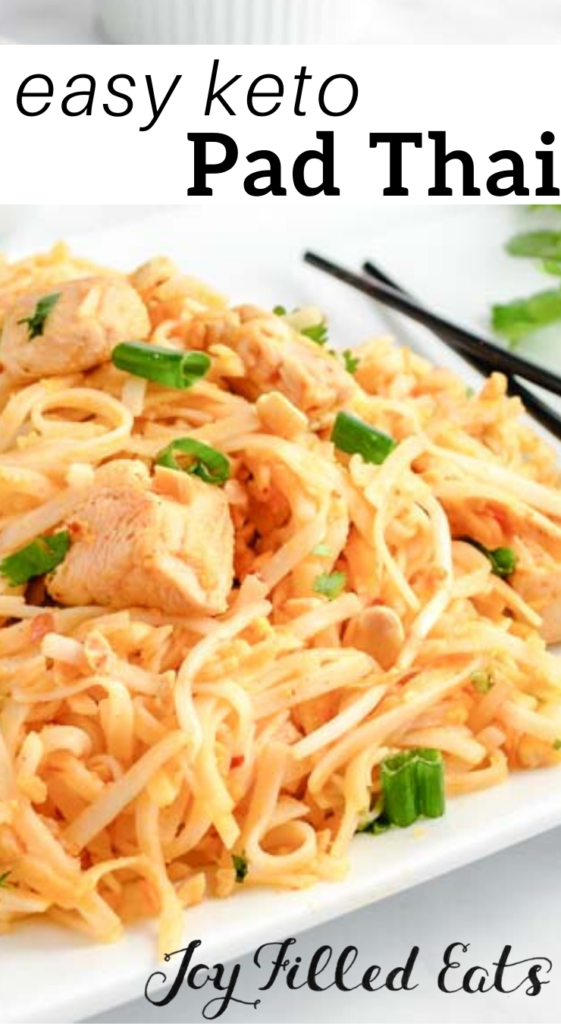
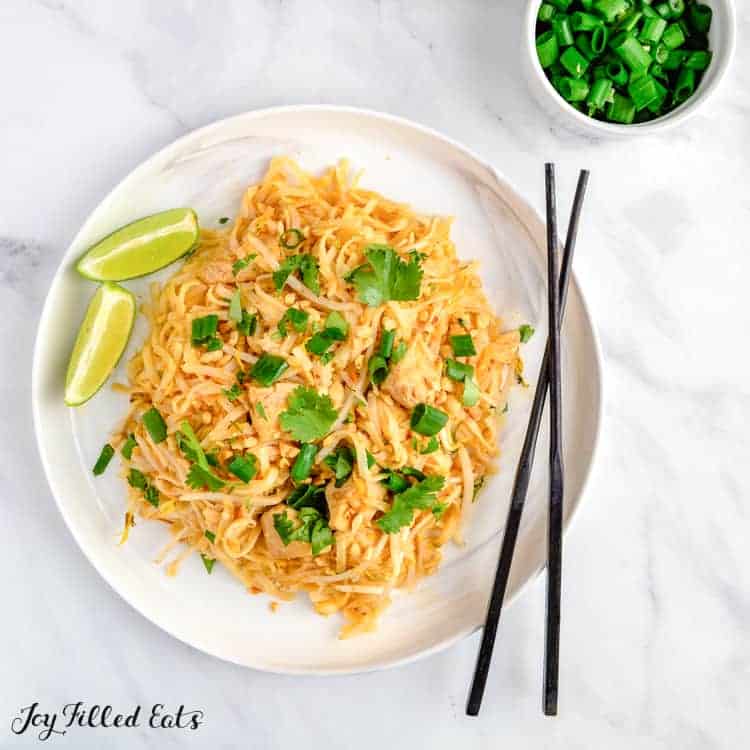
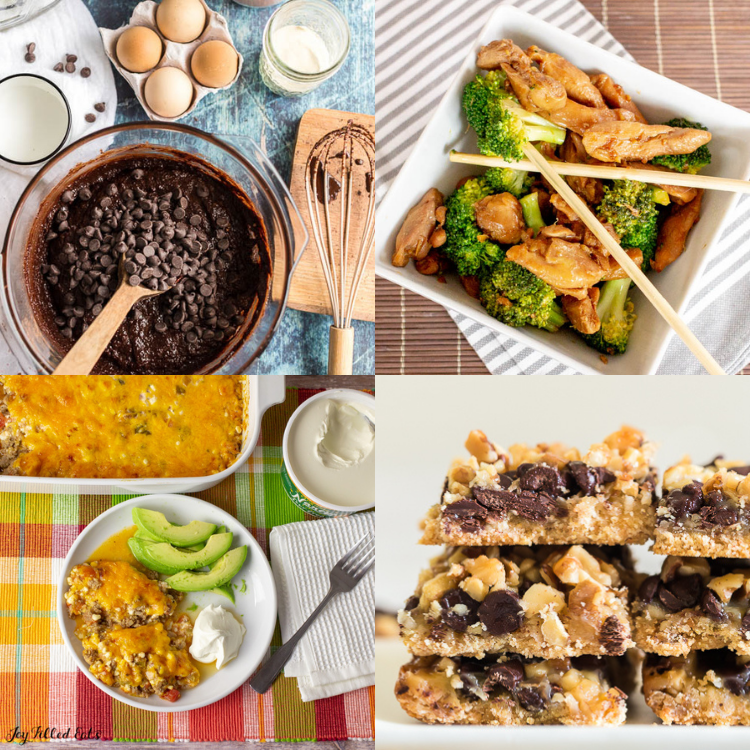
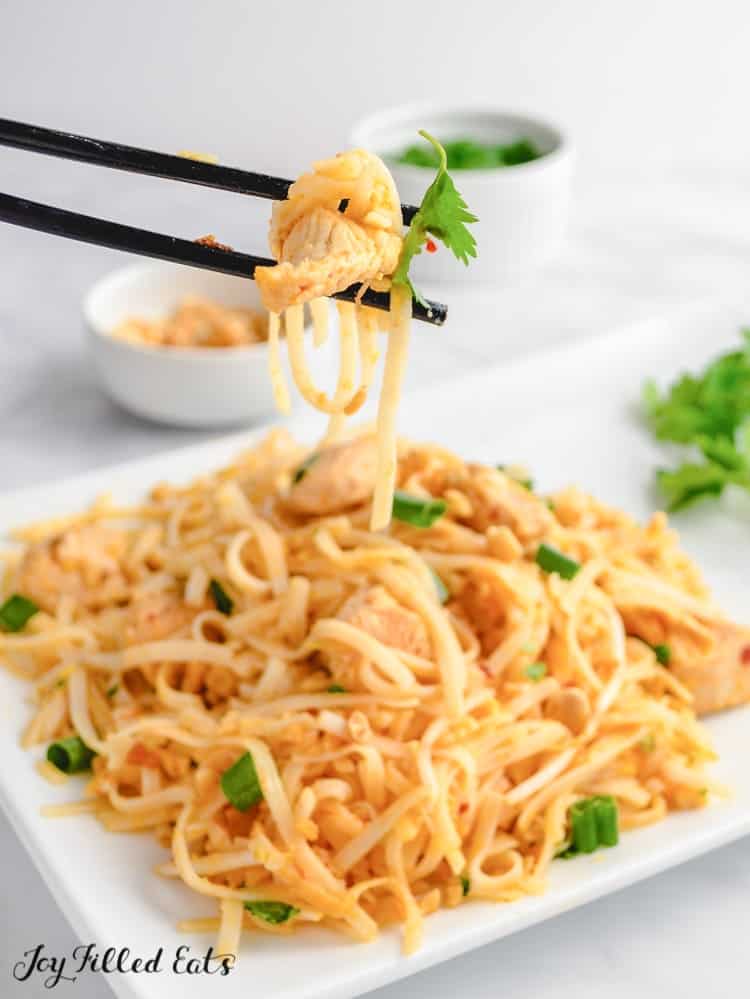
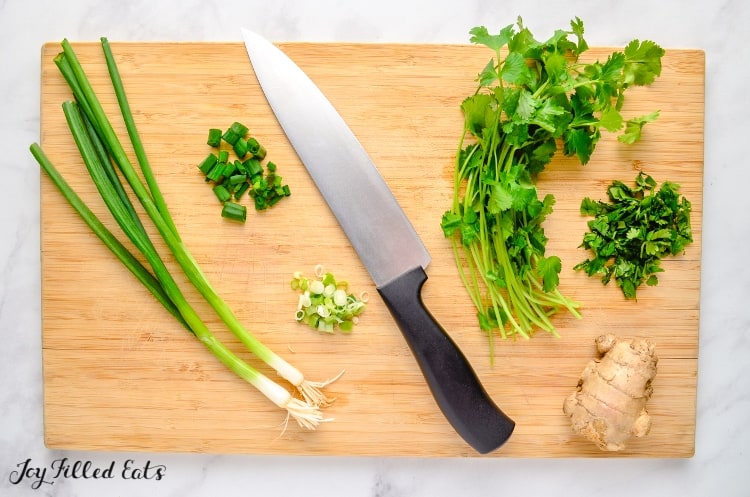
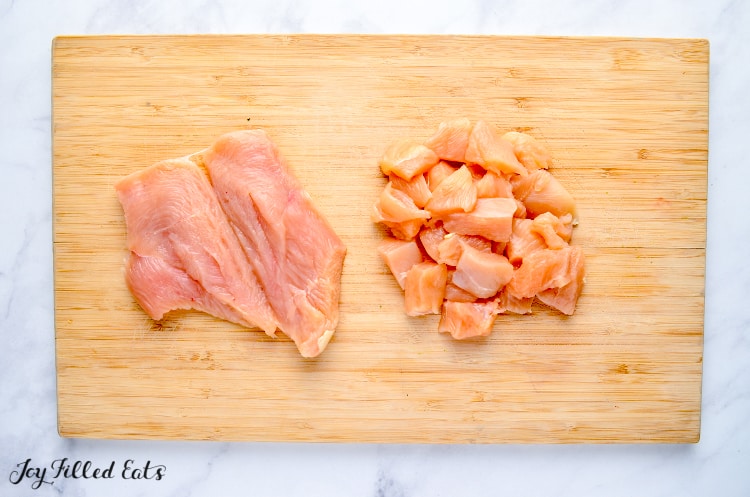
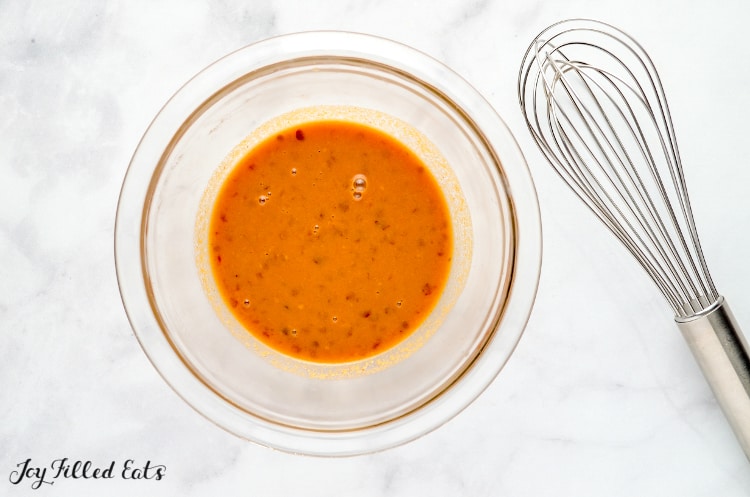

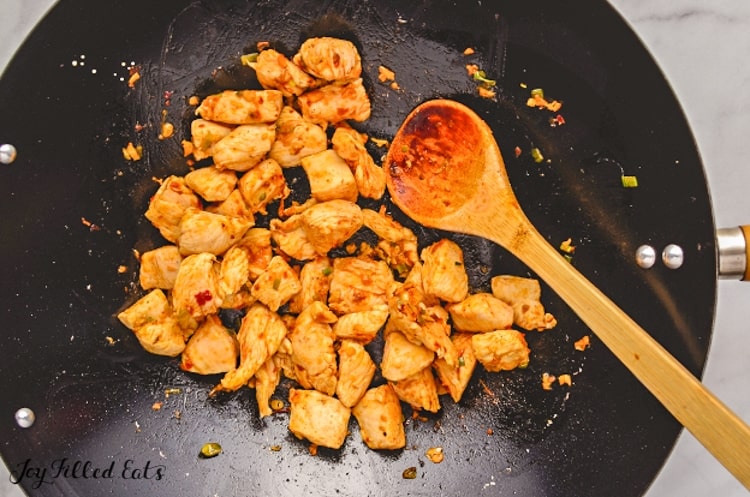
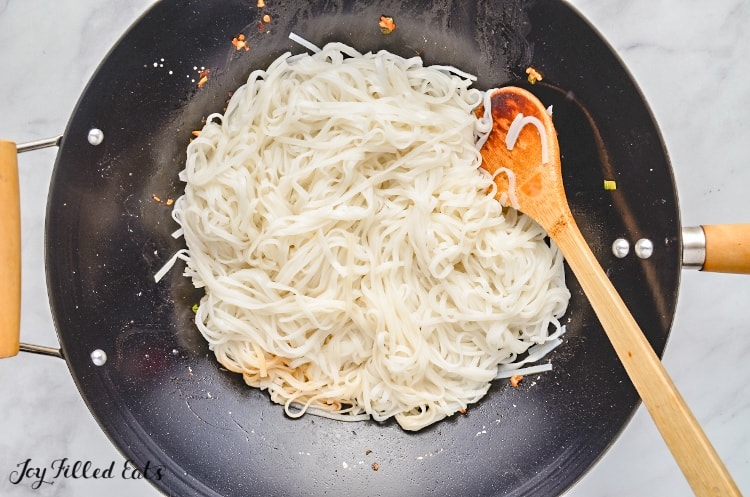
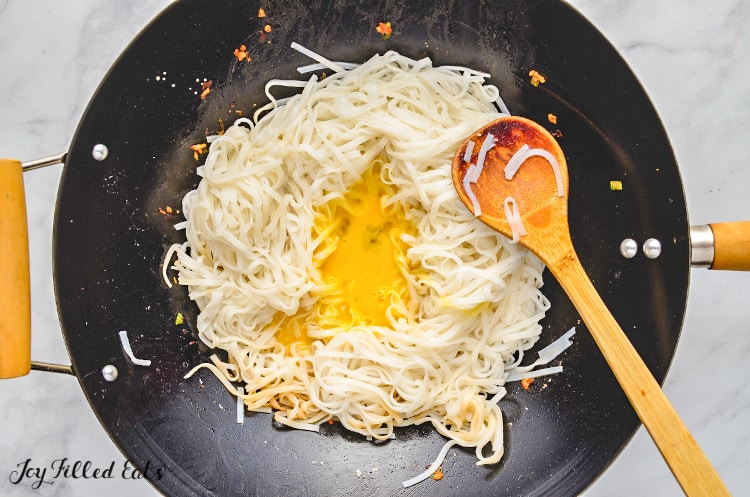
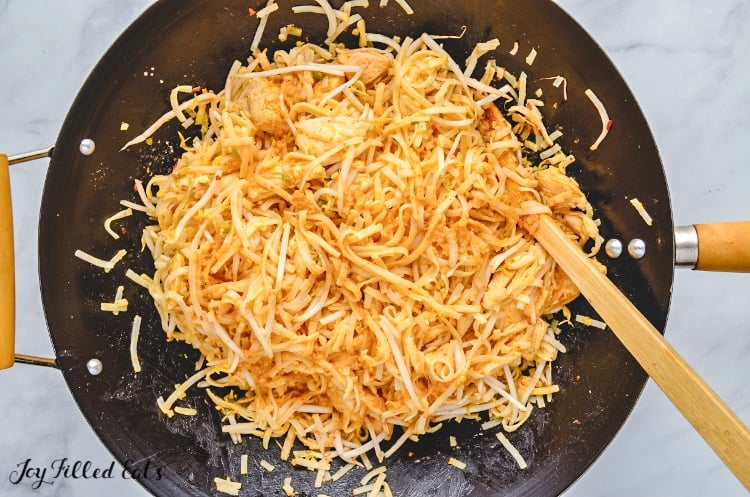
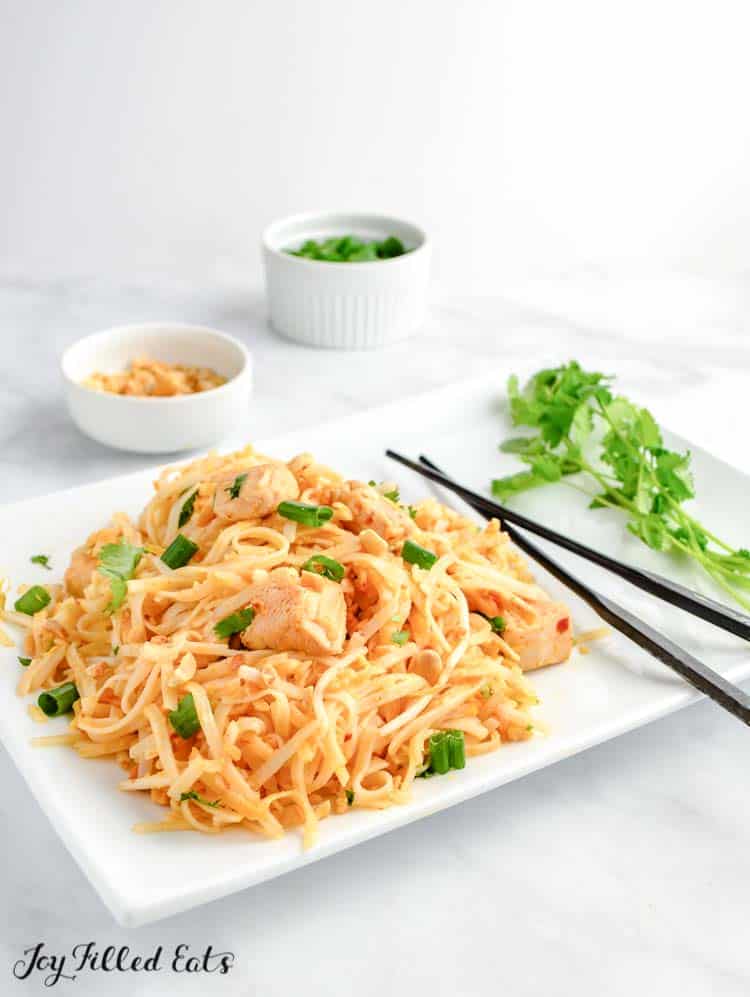

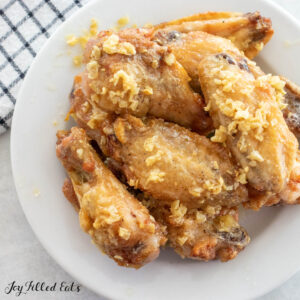
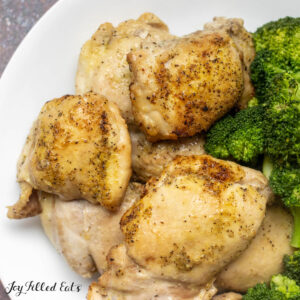



S Tiffany says
I tried miracle noodles last week. Followed directions (I thought) and they were gross! Had them with Alfredo sauce and felt like I was chewing rubber bands! What did I do wrong?
Taryn says
They definitely have a unique texture. I like shirataki noodles in Asian recipes but for Italian recipes, I prefer hearts of palm noodles (palmini is a common brand).
Gina says
Love finding new Keto recipes to try and this one did not disappoint. It was incredible! This will become a staple in our house!
Brandy says
Love pad-thai and this recipe was great! It was easy to make and very delicious. Can't wait to make again!
Kyle says
The sauce was wayyyyyy to sour inedible
Taryn says
I'm very surprised to hear that. This gets great reviews pretty consistently. Two tablespoons lime juice when mixed into the sauce and mixed into the other ingredients shouldn't be too sour. Sorry you didn't like it.
Ron says
Amazing. I will definitely make this a staple in my house.
Taryn says
Thanks, Ron! I did edit out the f***g from before amazing. Trying to keep things PG here 😉
Marie says
Not a fan of shirataki noodles. Love the palm noodles though - will be making this using those for dinner tonight.
Ron says
Don’t be whiny. It’s amazing. I will definitely make this a staple in my house.
Lawanna Pierce says
We love this. We use Kohlrabi noodles and they are wonderful!
Victoria says
I love this recipe! It’s so easy to make and tastes amazing! Since I am working on lowering my cholesterol I skipped the chicken and added tofu instead! Thank you so much for this recipe, I have officially put it on my recipe rotation 💖
Nick H says
Loved it! Thanks for this easy translation to the Keto world! It was pretty much like take out.
I have been doing keto for a few yrs so felt pretty comfortable with these ingredients. Honestly, shiragaki stinks out of the package, but the hot water rinse and dry fry were essential to rid the smell and get the yummy Thai taste. I wouldn't have noticed they were shiragaki if it was served to me!
Gayle says
I follow the recipe exactly and this was very good. Hit the spot for Keto/low card diet. I am gluten free so have gotten over the texture issue of the Shirataki noodles. I love your other suggestions, maybe cauliflower rice would be good to!